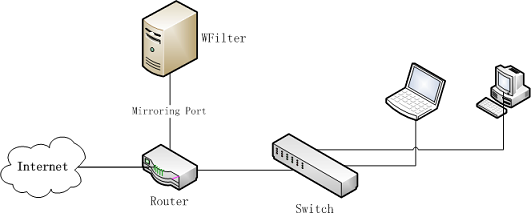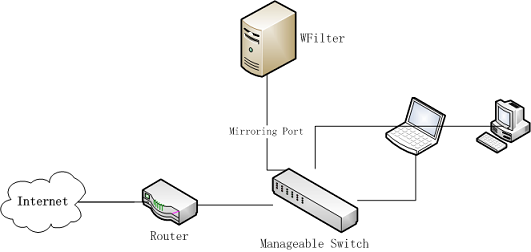Pass by deployment
From WFilter Documents and Tutorials
(Difference between revisions)
| Line 12: | Line 12: | ||
##*[[Cisco_RVS4000|Cisco RVS4000]] | ##*[[Cisco_RVS4000|Cisco RVS4000]] | ||
#Switch Examples | #Switch Examples | ||
| − | ##Network topology diagram(the switch shall support "port mirroring" feature):<br>[[image:passby_switch_topology]]<br> | + | ##Network topology diagram(the switch shall support "port mirroring" feature):<br>[[image:passby_switch_topology.png]]<br> |
##Examples: | ##Examples: | ||
##*[[switch_Huawei_Quidway_S5012P|Huawei Quidway S5012P]] | ##*[[switch_Huawei_Quidway_S5012P|Huawei Quidway S5012P]] | ||
Revision as of 14:13, 15 July 2014
- Pros and Cons
- Pros
- Integrated with your current hardware, network topology can remain unchanged.
- No influence to your network performance. In pass-by mode, WFilter analyse copies of network packets and does not delay the original packets. So your internet speed will not be affected.
- Internet access is still available even if the WFilter computer crash or power off.
- Cons
- Requires "port mirroring" feature of your switch or router.
- n pass-by mode, WFilter sends RST packets to terminate tcp connections. But it can not block udp traffic, so you also need to block certain udp ports in your router or firewall. Please check:How to block certain UDP ports in router/firewall?
- Pros
- Router Examples
- Switch Examples
- Others

